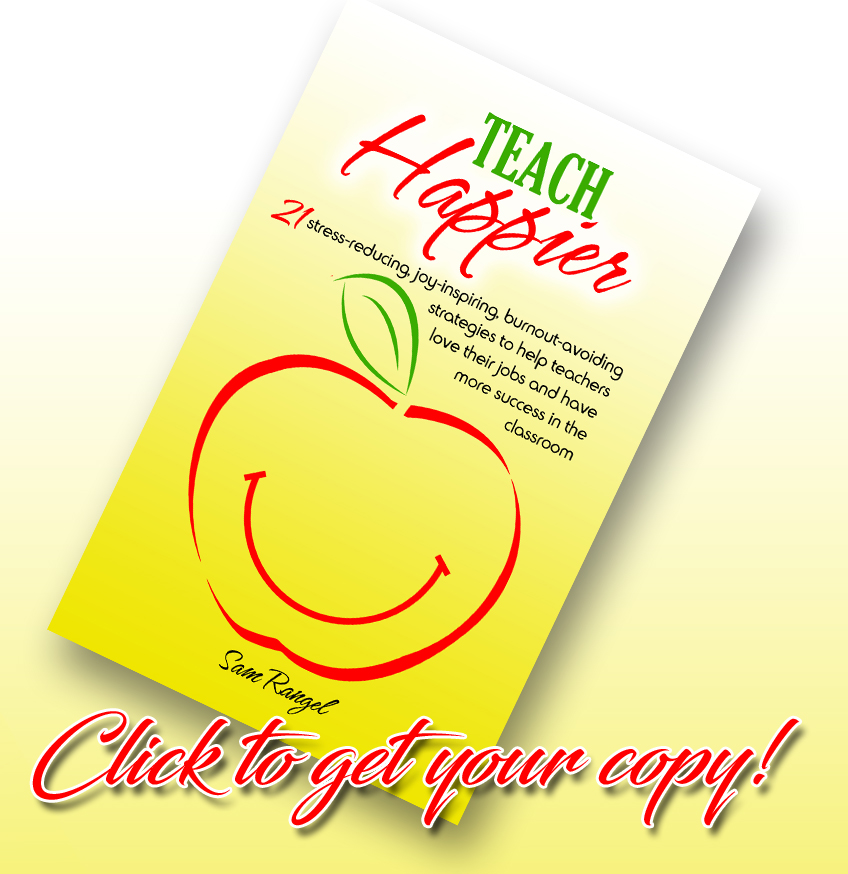
Today I had another one of those I-Don’t-Have-Any-Problems moments. You know the kind when you realize that what you’re complaining about is really not worth complaining about.
I had to give a student a consequence, because she didn’t bring her grade report signed by her parent. She was failing some of her classes, and because of that, she was required to have a parent sign her grade report. Well, she didn’t, and as the administrator, I had to give her some detention time.
I asked her why she hadn’t had it signed, and she told me that she was going through some tough times at home, and she didn’t want to get her mom mad at her.
We talked a little, and I sent her on her way with the detention.
I then got a visit from the mom.
She told me that she needed to talk to someone about her daughter.
She began telling me what’s going on at home while at the same time emptying my Kleenex box.
I just listened.
She was finalizing a divorce from her husband.
She lost her house, so she was technically homeless, even though she was living with friends.
She lost her day care business when she lost her house.
She can’t get money from the father.
Father is using drugs.
Father bought a new house and promised to give the student her own room when she came to visit, but then he had his girlfriend move in instead.
So, where does school work fit in? How does the student concentrate on her history test when she is witnessing the break up of her mom and dad?
Luckily, this student has a mom who cared enough to come to the school and see if we could help.
I gave the student’s name to the school counselor, and he will be following up with her.
I grew up in a home where mom and dad loved each other, where we ate together, said good-night to each other, went on vacations together. It was a loving environment. I can’t remember not being happy.
As new teachers, you’re going to find students who have home lives you won’t believe. It’s up to you to provide a safe place where they can escape to. Home should be the student’s favorite place to be. When it’s not, your classroom needs to be.
How can I make my classroom a safe place, Sam?
I’m glad you asked.
1. Listen.
Don’t just hear. Stop what you’re doing. Look into their eyes and give their story value. They’ll come to you with a tragic story of how their favorite TV show was cancelled. Inside you’ll be laughing, but don’t. You may be the only adult who will take the time to be interested in what they have to say.
2. Ask.
Ask them questions about anything. “What did you do over the weekend? Who is your favorite singer? What do you think about what happened on American Idol? When you ask them questions, you are showing that you are interested in their opinion, which translates in their brains to being interested in them.
3. Encourage.
A lot of students, especially the students with poor home lives like to give up quickly. They run into an obstacle, and instead of trying to overcome it, they quit. That’s where you come in. “Don’t give up. You can do it. I know you can. Try it again.” You may be the only adult who has ever stopped them from giving up.
4. Praise.
This is an easy one. Make a big deal about their accomplishments, even the small ones. If they answer a question correctly, don’t just say, “Right.” Make it an event. “YES! That’s a smart boy right there! Good answer.” Some kids never get any praise.
5. Forget.
Forget the mistakes. Forget the times when the student irritated you. Forget the bad grade on a test. Forget the drama of yesterday. Forget and forget quickly. They will forget their failures faster when you do.
6. Remember.
Remember the successes. Remember when the student answered the question right yesterday. Remember the funny story he/she told you a week ago. Remember the good grade on the last test, and here’s a big one: Remember their birthday. You don’t have to make it a big event with a jumper and Bobo the Clown, but even saying, “Happy Birthday” will send a message that they are important enough that you remembered their birthday. People who care about you celebrate your special day. When you do tell them “Happy Birthday,” try saying it in front of the class or in a crowded hallway. That’s cool.
7. Touch.
You have to be careful with this one, of course. Women have a little bit more freedom to give a hug to students, but even male teachers like me can give a high five or a knuckle bump. I like giving pats on the back also. I never hug students unless they initiate it, and even then it’s a quick one. There is something about physical contact, however, that sends a message to the student that they are valued. Some students, believe it or not, never get hugs from their parents.
8. Smile.
This is more powerful than it appears. I’m not a natural smiler, and it’s something that I have to consciously make an effort to do. Smiling tells a student that they are welcomed. A smile is a form of communication. It sends a message – a message of approval. A smile from a teacher can be the only positive message that a student receives all day.
9. Predict.
Show the future to your students. Describe to them a future where they are successful and happy and making a difference in the world. I know teachers who tell their students, “If you don’t get good grades, you’re going to end up spending your life taking out other people’s garbage.” I know they’re trying to motivate the student, but it works better if you offer a future that is bright and filled with success for those who get good grades. For those students who are dealing with stressful situations, remind them that the future is better than the present. Predict a positive future. You may be the only adult who does.
10. Believe.
Students will forever remember two kinds of teachers – those who belittled them and those who believed in them. Some students have adults in their lives who tell them every day that the future is bright and hopeful. I was that kid, and I will forever be grateful for loving parents who never stopped believing in me.
As every teacher eventually learns, however, there are other students who have never had anybody believe in them. It’s heartbreaking. I can think of several students who attend my school right now who are in that category.
I am so grateful for those teachers who look beyond the exterior of these students, their labels, their behavior history, and remind them every day that they believe in them and their potential for success.
“Every kid is ONE caring adult away from being a success story.” -Josh Shipp
Be a believer.
Teaching is so much more than just educating. Sometimes you have to be the parent, counselor, encourager, friend, sounding board, and even a home maker.
Thank you for making your classrooms better than home for our kids.
Thanks,
Sam
Have you downloaded my Teacher’s Heart poster? It’s free. Click here to download.





This is an excellent list. As a graduate relief / substitute teacher, I have found “active listening” & small talk to be critical to building positive relationships & safe learning environments. It helps to remember the ‘little things’ about your students – eg. their passion for building model cars. Its’ amazing what a difference this can make.
I’d also add participating in Breakfast / Lunchtime Clubs to the list – they are great forums for informal conversations with students.
You might be interested in my extensive blog postings on this topic on ‘A Relief Teacher’s Journey’-
http://areliefteachersjourney.blogspot.com/2010/11/reflections-on-classroom-management.html
Hi Michael,
Thanks for the comment. I like the lunchtime club idea.
I like your site too. I’ll be stopping by more often.
Thanks again,
Sam
Hi Sam
Just wanted to say the list you’ve developed here is awesome. As a pre-intern teacher, I was only able to spend one day a week in school last term. This did not stop me from building amazing relationships with the students just by listening to them, praising them, smiling and overall caring about them.
I somewhat disagree with the statement that women have an easier time with the hug issue than men. Though I acknowledge that there is certainly social perceptions attached, I think the true factors are personal comfort zones and community climate. My own hug rule is simply only within the view of another adult who I know/trust. The more you show yourself as a genuine, caring, person, I think the more those negative perceptions seem to fade away.
For your tenth item, I immediately thought of this list made into a poster at my school. I couldn’t pick just one from this huge list though I am particularly attached to 42 – Talk to them at eye level, showing them they’re equal.
http://www.healthandsocialdevelopment.com/WH02%20150%20Ways%20to%20Show%20You%20Care.pdf
Thanks for the comment Nathan.
I see your point about the hugging. I think having another adult within viewing range is a great idea.
Your poster is awesome also. I hope everyone who reads this post downloads it. I did.
Thanks again,
Sam